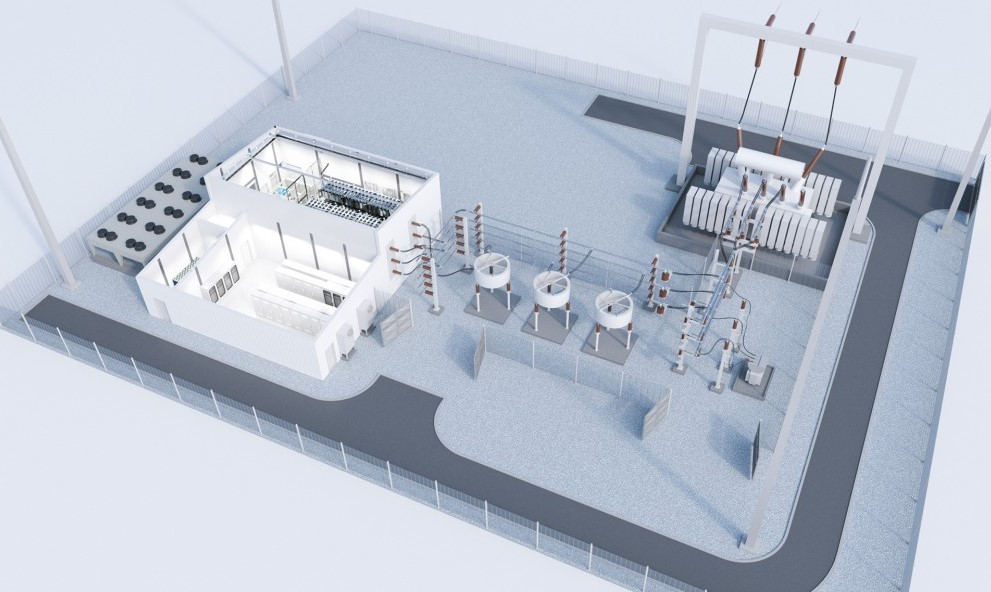- NVCHARGE SOLUTION FOR ELECTRIC VEHICLES
- DANFOSS
- RENEWABLE ENERGY
- INTERGRATED SOLUTIONS
- Medium and low voltage inverter system
- Conveyor Weighing System
- Automatic transfer switch system - ATS
- Motor control center system - MCC
- Distributed Control System - DCS
- PLC - SCADA control system
- TPS control system
- Online coal analyzer and monitor system
- MV and LV soft start system
- UPS system
- MDB & DB distribution cabinets, power supply cabinets
- MARECHAL - TECHNOR
- BORRI
- FLENDER
- DURAG
- SOLCON
- SIEMENS
- METSO OUTOTEC
- TECHNICAL SERVICE
Product Categories
Supplier
Static Synchronous Compensator STATCOM
A STATic synchronous COMpensator (STATCOM) is a fast-acting device capable of providing or absorbing reactive current and thereby regulating the voltage at the point of connection to a power grid. It is categorised under Flexible AC transmission system (FACTS) devices. The technology is based on VSCs with semi-conductor valves in a modular multi-level configuration.
The dynamic reactive current output range is symmetrical (during normal disturbed network conditions); however, non-symmetrical designs are possible by introducing mechanically or thyristor switched shunt elements with unified control systems to cover most conventional applications. The STATCOM design and fast response makes the technology very convenient for maintaining voltage during network faults (as STATCOMs are capable of providing fast fault current injection limited to the rated current), enhancing short term voltage stability. In addition, STATCOMs can provide power factor correction, reactive power control, damping of low-frequency power oscillations (usually by means of reactive power modulation), active harmonic filtering, flicker mitigation and power quality improvements. Typical applications are in the electric power trans-mission, electric power distribution, electrical networks of heavy industrial plants, arc furnaces, high-speed railway systems and other electric systems, where voltage stability and power quality are of the utmost importance.
Technology Types
A typical STATCOM configuration consists of multi-level VSCs based on IGBTs, phase reactors and step-up transformer. It is shunt-connected to the grid. The reactive current is provided or absorbed by producing a controlled internal voltage waveform. Most STATCOMs available in the market today operate as GFCs and require a grid voltage reference to operate (with a defined level of grid strength). The voltage waveform is adjusted in its response with reference to the grid connection point voltage. In general, the STATCOMs operate as AC current controlled device, although the control of the output current is achieved via the regulation of the STATCOM internal voltage (behind the phase reactor) in amplitude, whereas the angle is close to 90 degrees with respect to the grid connection point voltage. If the STATCOM voltage amplitude is higher than the system voltage amplitude, capacitive reactive power is provided to the grid.
If, vice versa, current flows from the system to the STATCOM and inductive reactive power is provided. The amount of reactive current depends on the transformer short circuit reactance and the voltage difference and is limited to the thermal limits of the IGBTs. In normal operation, i.e. the system voltage is within certain limits, both voltage amplitudes are equal and no reactive power is exchanged with the grid. An established control is if the grid voltage is above the threshold value, STATCOM control will decrease the amplitude of the STATCOM voltage waveform, making the STATCOM act as an inductive element and absorb reactive power from the grid. When the grid voltage is above the threshold value, the magnitude of the voltage waveform will be increased, making the STATCOM act as a capacitive element and providing reactive current to the grid.
Advantages & field of application
Modern designs are modular and allow for a high level of scalability and flexibility, ensuring the total required dynamic and steady state rating. Via the addition of shunt elements, the symmetrical output range of the pure STATCOM device can be adjusted to also meet non-symmetrical performance requirements. For conditions where a fast non-symmetrical dynamic range is required, on the one hand, thyristor-switched reactors and capacitors can be operated in parallel to form hybrid solutions. On the other hand, mechanically switched reactors and capacitors can be added to optimise slow response performance and provide additional steady-state capacity as required by e. g. typical intra-day load flow changes.

- NVCHARGE SOLUTION FOR ELECTRIC VEHICLES
- DANFOSS
- RENEWABLE ENERGY
- INTERGRATED SOLUTIONS
- Medium and low voltage inverter system
- Conveyor Weighing System
- Automatic transfer switch system - ATS
- Motor control center system - MCC
- Distributed Control System - DCS
- PLC - SCADA control system
- TPS control system
- Online coal analyzer and monitor system
- MV and LV soft start system
- UPS system
- MDB & DB distribution cabinets, power supply cabinets
- MARECHAL - TECHNOR
- BORRI
- FLENDER
- DURAG
- SOLCON
- SIEMENS
- METSO OUTOTEC
- TECHNICAL SERVICE
